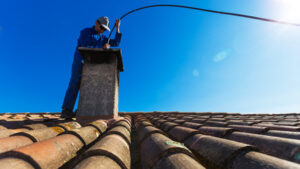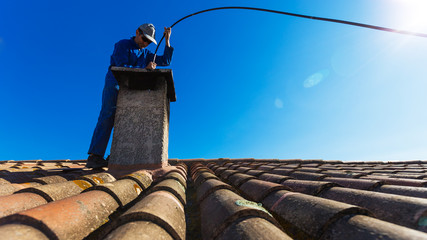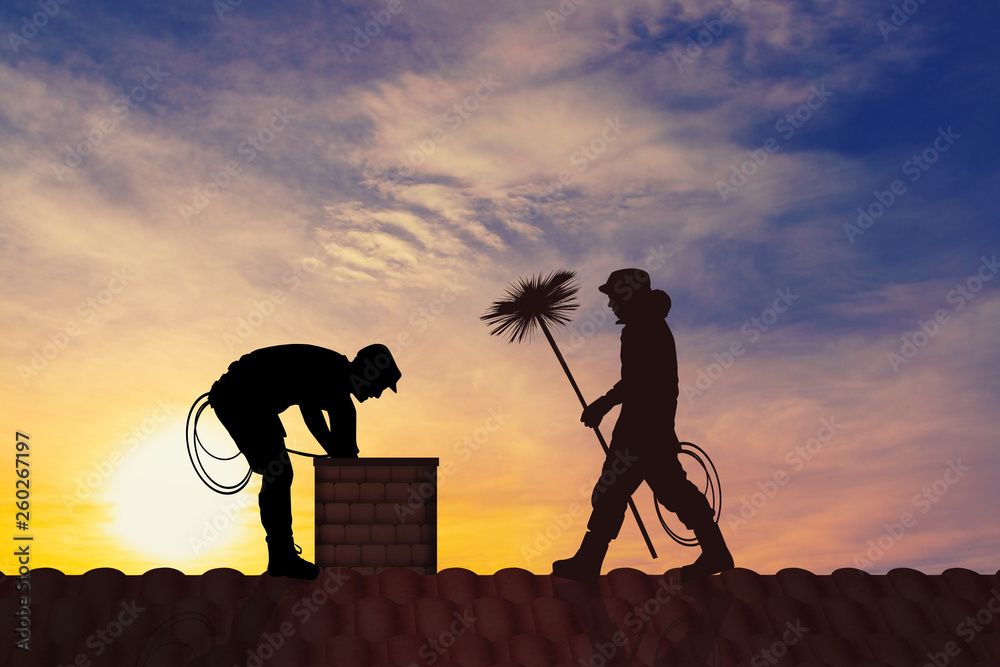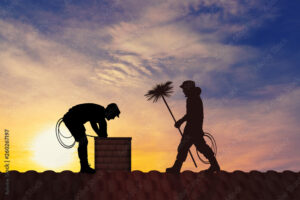Ensure compliance with regulations by having your chimney inspected and cleaned. Chimney Sweep Clean offers transparent pricing and has a good reputation.
Before the chimney sweep arrives, clear off the fireplace area so they have a smooth work surface. Remove any fireplace tools and other items that could be knocked over or broken.

When woodBuilduptificial logs burn in your fireplace, the combustible byproducts settle in the chimney. When they cool, they solidify onto the chimney walls and become creosote. If you don’t get your chimney swept regularly, creosote can build up to dangerous levels. It can also keep smoke and gases from venting out of the home, which exposes you and your family to toxins like carbon monoxide. It can even cause a chimney fire that destroys the entire structure and possibly the house.
The National Fire Protection Association recommends you have your chimney, flue, and solid fuel-burning appliances inspected and swept at least once a year. Your chimney sweep will provide you with a written report that lists the results of the inspection and cleaning and recommends any repairs or maintenance needed to keep your home safe. Your sweep will also note pests in the chimney and recommend when you should have it re-plumbed or repaired to minimize creosote buildup.
Chimney buildupare trained to identify the different stages of creosote. The first stage looks like flaky, shiny black flakes and is easily removed with a basic chimney brush. However, if you let it get to the second stage, it’s more difficult to remove and looks more like hardened tar. This is the most problematic stage of creosote as it’s very sticky and highly combustible. A CSIA-certified chimney sweep will use a special type of drill with metal rods called a rotary loop to remove it.
If your creosote gets to the third and final stage, it’s almost impossible to remove. This tar-like substance can coat the entire chimney and can be over an inch thick in some cases. It can be so sticky and combustible that it might require chemical removal products. This is the most dangerous stage of creosote because it clings to the chimney and restricts air flow, which leads to more creosote accumulation.
Be aware that some companies may try to frighten you with words like carbon monoxide poisoning or chimney fires when recommending a sweep and other services. If they use these terms, get a second opinion or find another company.
Chimney fires can be dangerous to the occupants of the home and can also spread fire damage and smoke throughout the house. A chimney that has been neglected and allowed to accumulate creosote can become so flammable that it is a fire hazard and should be cleaned as soon as possible. Chimney sweeps are trained to notice signs of chimney problems that can lead to fire hazards and can offer a variety of services to help keep your chimney in top condition.
Before a chimney sweep begins their inspection and cleaning it is helpful to move any furniture away from the fireplace, cover it with plastic or a drop cloth and to clear off the fireplace floor. This will speed the process and help prevent any unnecessary mess that can make the visit more difficult and time consuming.
The chimney sweep will begin by examining the flue liner from the roof or, if there is a viable opening at the firebox, from inside the fireplace. If the chimney liner is damaged or in need of repair a professional chimney sweep will be able to repair this during this stage. The chimney sweep will then examine the firebox and the smoke chamber. The chimney sweep may then recommend a level of cleaning depending on how much creosote has built up, how often the fireplace is used, and whether or not the chimney has been swept in the past year.
In addition to removing the flammable creosote, chimney sweeps can perform repairs and install replacement parts to make your fireplace safer and more efficient. They can provide replacement chimney caps, dampers and crowns as well as repairing masonry chimneys, rebuilding chimneys and relining fireplaces.
The NFPA and the CSIA both strongly advise homeowners to have their chimneys, fireplaces, flues and vents regularly inspected by a professional and cleaned as needed. The NFPA says that chimneys, flues, and vents should be inspected and cleaned at least once every 24 months to ensure they are in good working order and free of fire hazards. The CSIA suggests that chimneys should be inspected and cleaned when creosote glaze is visible, which is a thick, inky, cake-icing like substance.
The sheltered, dark environment of the chimney makes it an attractive place for rodents and other pests to make their homes. Rats, squirrels, birds, bats and other critters can wreak havoc with a chimney by making nests, chewing on the structure and causing damage over time. Additionally, if the critters find their way inside your home, they can carry disease and create a mess with droppings, urine and other debris.
While it is possible to remove animals and nests from your chimney yourself, this task is best left to a professional. A CSIA-certified chimney sweep will be able to inspect the chimney and look for signs of pests like bird droppings or nests. They will also be able to determine if the critters entered your home through another entry point and can recommend solutions for keeping them out.
Depending on the type of animal, you may be able to use traps. However, it is important to remember that some animals are protected by law and should not be disturbed without a permit. A qualified wildlife control company can help you with the necessary permits.
In addition to using traps, a professional can install a protective cap or screen to keep critters out. They can also recommend preventative measures, like sealing food in tight containers and securing pet doors to keep them from sneaking into your home.
Chimneys are a perfect hideout for mice and rats, which can cause serious damage to your fireplace and house by chewing on pipes, wiring, wood and other fixtures. They can also spread a wide variety of diseases to both people and pets. Rats can even be fatal if they are exposed to smoke from a fire.
Often, you will not know you have a problem with rats or mice until they begin to leave droppings and other signs of their presence in your home. However, if you do notice these symptoms, it is a good idea to call in an exterminator right away. The most effective way to stop rodents from entering your chimney is to have it professionally sealed and capped.
A chimney that’s dirty or clogged is a fire hazard, and it can also lead to water damage and odor problems. It’s important to have your chimney inspected and cleaned by an experienced professional at least once a year. This will help reduce the risk of a chimney fire and ensure that your fireplace is working properly and is safe to use.
Chimney sweeps are trained to look for hidden issues with fireplaces and chimneys, and they can provide advice on how to keep your home safe and functional. They can also identify problems that may require more extensive repairs or maintenance, such as a damaged liner or chimney cap. A good chimney sweep will be licensed and insured, and they should be a member of an organization that sets high standards for the industry.
Before the sweep arrives, you should move any furniture away from the fireplace or cover it with a sheet to avoid splatters. You should also remove any pets from the room, as they can be easily frightened by the noise and movement of a chimney sweep and its tools.
The chimney sweep’s first step is to visually inspect the chimney inside and out, looking for blockages and creosote build-up. They mabuildupcamera to examine hard-to-reach areas of the chimney. The chimney sweep will then use brushes and a vacuum system to clean the chimney. This process can take a few hours, and the sweep will make every effort to minimize mess indoors and outside.
During this process, the chimney sweep will wear a protective mask to avoid breathing in smoke or other fumes. They will also wear safety glasses to protect their eyes from debris and tumbling ash. If a chimney needs repair, the sweep will inform you about options and prices. A written report will outline the inspection and cleaning results, as well as any recommendations for maintenance or repairs.
Chimney sweeping has been around for hundreds of years, and it’s a necessary profession that provides many benefits to homeowners. Regular chimney cleaning is essential to keeping your fireplace and home safe from fire hazards, and it can also prevent chimney and flue leaks.


